83+ Cats Paw Nebula
It can be seen from Earth in the Scorpius constellation. At 5500 light years distant Cats Paw is an emission nebula with a red color that originates from an abundance of ionized hydrogen atoms.
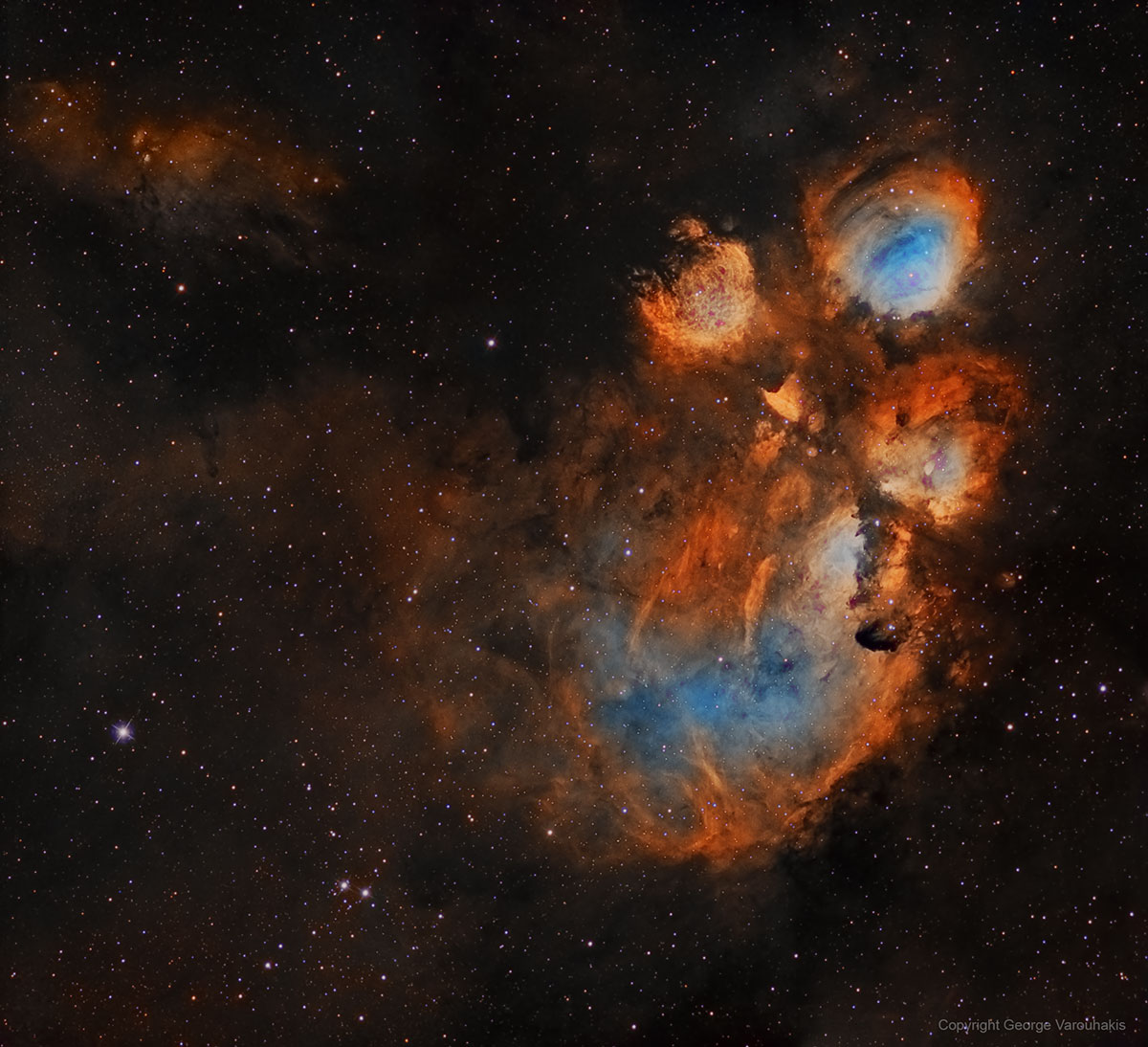
Apod 2017 September 13 Ngc 6334 The Cats Paw Nebula
To bookmark this query right click on this link.

Cats paw nebula. Cats paw is an emission nebula. It was discovered by John Herschel in 1837 from the Cape of Good Hope in South Africa. Store this result in Votable in Ascii or in the CDS portal.
SimbadCats Paw Nebula and select bookmark this link or equivalent in the popup menu. I tried and failed last year to get this so Im really happy I got it this time around. 194 subs of 150 seconds total integration time 8h.
Hi all Last week I spent a few nights imaging the helix nebula and the cats paw. NGC 6334 is also known as the Cats Paw Nebula or the Bear Claw Nebula and is located in the constellation Scorpius. The Cats Paw Nebula.
Faith Hope and Love. It is one of the nearest H. This nebula is only about a light year across and made up of two spherical halves.
At 5500 light years distant Cats Paw is an emission nebula with a red color that originates from an abundance of ionized hydrogen atoms. 2m x 48 Hydrogen Alphau0003. This very red emission nebula the Hydrogen emission is many times stronger than any of the other usual lines captured with narrowband filters OIII or SII spans about.
This large region contains some of the most active sites of star formation in our galaxy. The Cats Paw Nebula also known as the Bear Claw Nebula is an emission nebula in Scorpius. The bright cloudlike band running left to right across the above image shows the presence of gas and dust that can collapse to form new stars.
Quick run the advert. It is also known as the Cats Paw. Click here for full resolution image.
The nebula is home to tens of thousands of newly formed stars and plays host to about. Cats Paw Nebula. Be sure to explore Cats Paw Sector KC-V c2-19 as theres plenty of interesting things to scan and you can repair refuel and rest your weary jump drive at the Cats Cradle the best tariff free carrier in a thousand light years.
Ooh someones approaching the Cats Paw Nebula. NGC 6334 The Cats Paw or Bear Paw Nebula in Scorpius. The inset shows the region of a newly visible high-mass protostar.
Last image is life in Eock Bluae The Eock Bluae nebula was also pretty nice one of the few nebulas in the eastern Scutum-Centaurus arm and we also found fungal life there in one of the valleys. It is a stellar nursery containing some massive new stars. The dark filament running through the middle of the nebula is a particularly dense region of gas and dust.
Astrophotography 16054 others viewed this post. 2m x 30 Green Filteru0003. Taken with the 80 mm APO of.
An emission nebula with the resemblance of an animals paw print in the constellation of Scorpius. Add an annotation to this object. Alternatively known as the Bear Claw Nebula or NGC 6334 stars nearly ten times the mass of our Sun have been born there in only the past few million years.
Alternatively known as the Bear Claw Nebula or NGC 6334 stars nearly ten times the mass of our Sun have been born there in only the past few million years. The Cats Paw Nebula NGC 6334 in Scorpius lies about 5500 light years away. The Cats Paw Nebula an emission nebula about 90 lightyears across and is located 5500 lightyears away yet still resides within our Milky Way galaxy.
Report an error concerning the data of this object. First go at a new configuration which is pretty epic. The dark filament running through the middle of the nebula is a particularly dense region of gas and dust.
Alternatively known as the Bear Claw Nebula or NGC 6334 stars nearly ten times the mass of our Sun have been born there in only the past few million years. The Cats Paw Nebula is often imaged glowing bright red due to the presence of ionised hydrogen atoms located within the cosmic cloud. All the photos if not identified are from WWW.
Alternatively known as the Bear Claw Nebula or NGC 6334 stars nearly ten times the mass of our Sun have been born there in only the past few million years. The Cats Paw Nebula. It is about 5500 light-years from SolIts an active nursery of young massive stars born in the last few million years.
The Cats Paw Nebula imaged here by NASAs Spitzer Space Telescope using the IRAC instrument is a star-forming region inside the Milky Way Galaxy. The Cats paw nebula NGC 6334 - posted in Beginning Deep Sky Imaging. The nebula is about 50 light years across and lies at an approximate distance of 5500 light years from Earth.
40 x 30 arc-min. Using a telescope you can see it in the constellation Scorpio. The most aptly common-named nebula in the sky Cats Paw.
The red hue comes from ionised hydrogen atoms. Cats Paw Nebula NGC 6334 Public Domain 1 Jul 2016 Dylan ODonnell CATEGORY. Of all the crazy things people call nebula and constellations this one I.
The black filaments running through the. Here you are the latter. 2m x 31 Oxygen IIIu0003.
At 5500 light years distant Cats Paw is an emission nebula with a red color that originates from an abundance of ionized hydrogen atoms. The Rhythm of Life is the most Beautiful Voice. It is ionized by a samll number of O-BO stars.
The Cats Paw Nebula NGC 6334 imaged here by NASAs Spitzer Space Telescope using the IRAC instrument is a star-forming region of the Milky Way galaxy. Passion Freedom Loyalty and Desire. The Cats Paw Nebula NGC 6334 is an emission nebula and star-forming region 50 light-years across in the constellation of Scorpius.
Celestron 11 RASA F2u0003. At 5500 light years distant Cats Paw is an emission nebula with a red color that originates from an abundance of ionized hydrogen atoms. NGC 6334 the Cats Paw Nebula might be one of the most productive star-forming regions in the Milky Way.
Spectacular Photo From Eso S Vlt Survey Telescope Shows Cat S Paw And Lobster Nebulae Sci News Com

File Cats Paw Nebula Ngc 6334 Jpg Wikimedia Commons
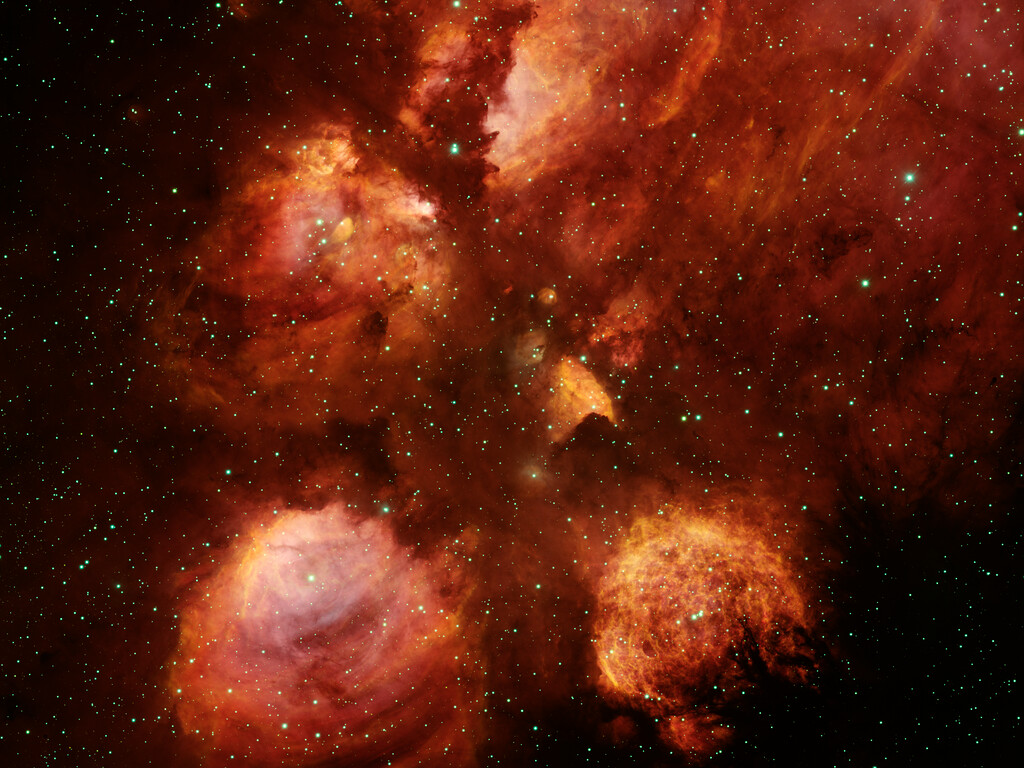
Ngc 6334 The Cat S Paw Nebula Noirlab
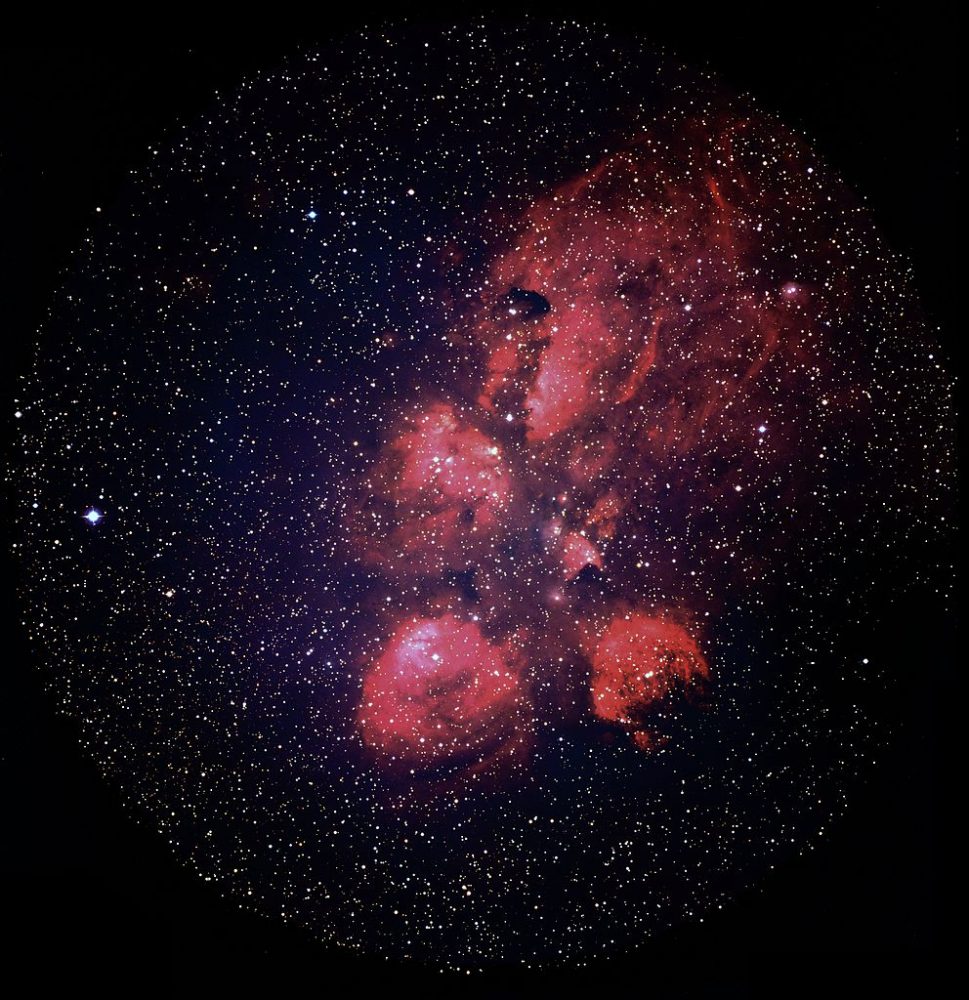
Cat S Paw Nebula Ngc 6334 Constellation Guide
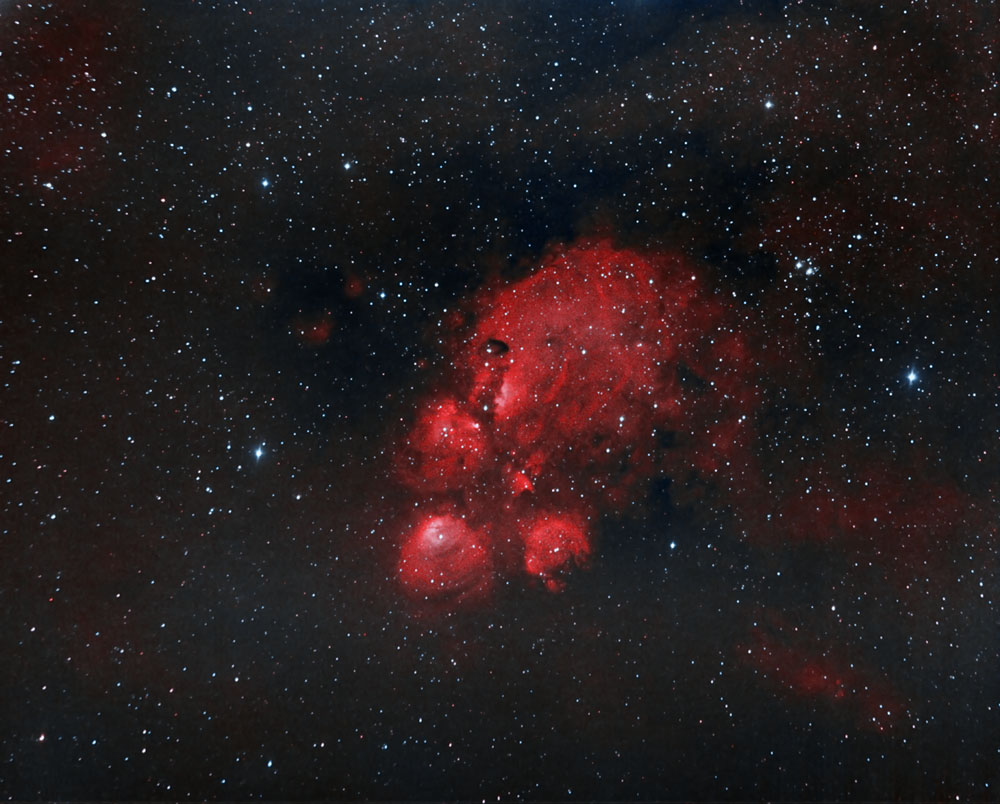
Ngc 6334 The Cat S Paw Nebula H Alpha Oiii Sky Telescope Sky Telescope

Ngc 6334 Cat S Paw Nebula Sky Telescope Sky Telescope
Newborn Stars Blow Bubbles In The Cat S Paw Nebula Nasa

The Cat S Paw Nebula Ngc 6334 Oc Astronomy
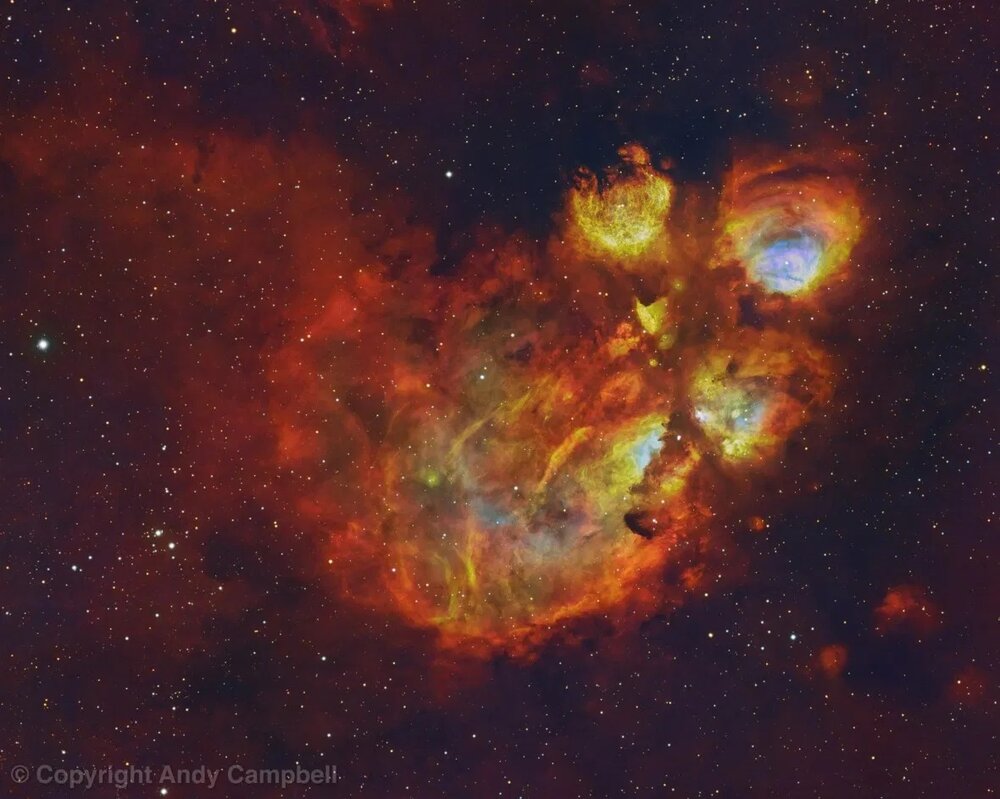
Comments
Post a Comment